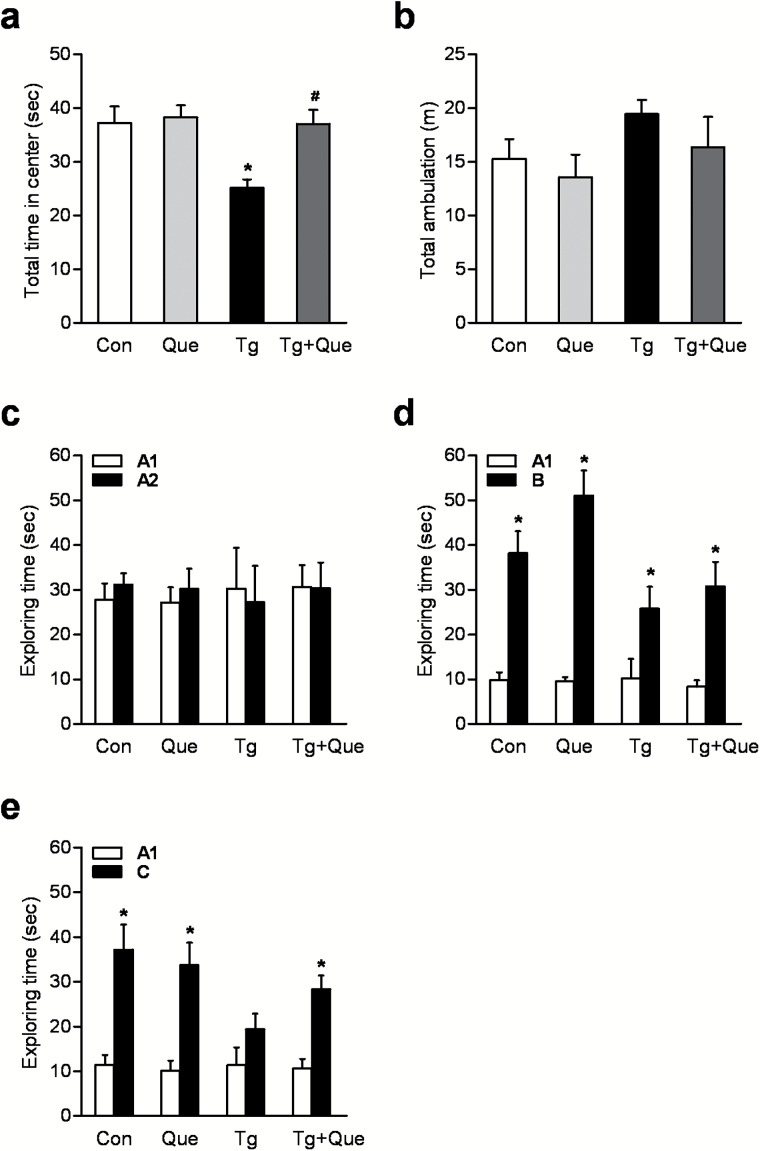Figure 1.
Quetiapine improves behavioral performance in amyloid precursor protein (APP)/presenilin 1 (PS1) mice. Total time spent in the center (a) and the total distance travelled in an open field test (b). c, The exploration time of mice on identical objects (A1 and A2) in the object recognition test. A t test showed that all groups of mice demonstrated equal total exploration time for each of the identical objects in the training session. d, The exploration time of mice on a familiar object (A1) and a novel object (B) in a retention trial 1 hour after training. A t test showed that all mice spent more time exploring the novel objective. e, The exploration time of mice on a familiar object (A1) and a novel object (C) in a retention trial 24 hours after training. A t test showed that transgenic mice exhibited an impaired ability to discriminate between the familiar object and a novel object C, whereas transgenic mice treated with quetiapine spent more time exploring the novel object C. Data are expressed as means±SEM, n=7 to 10 mice per group. *P<.05 vs Con; # P<.05 vs transgenic + water.

